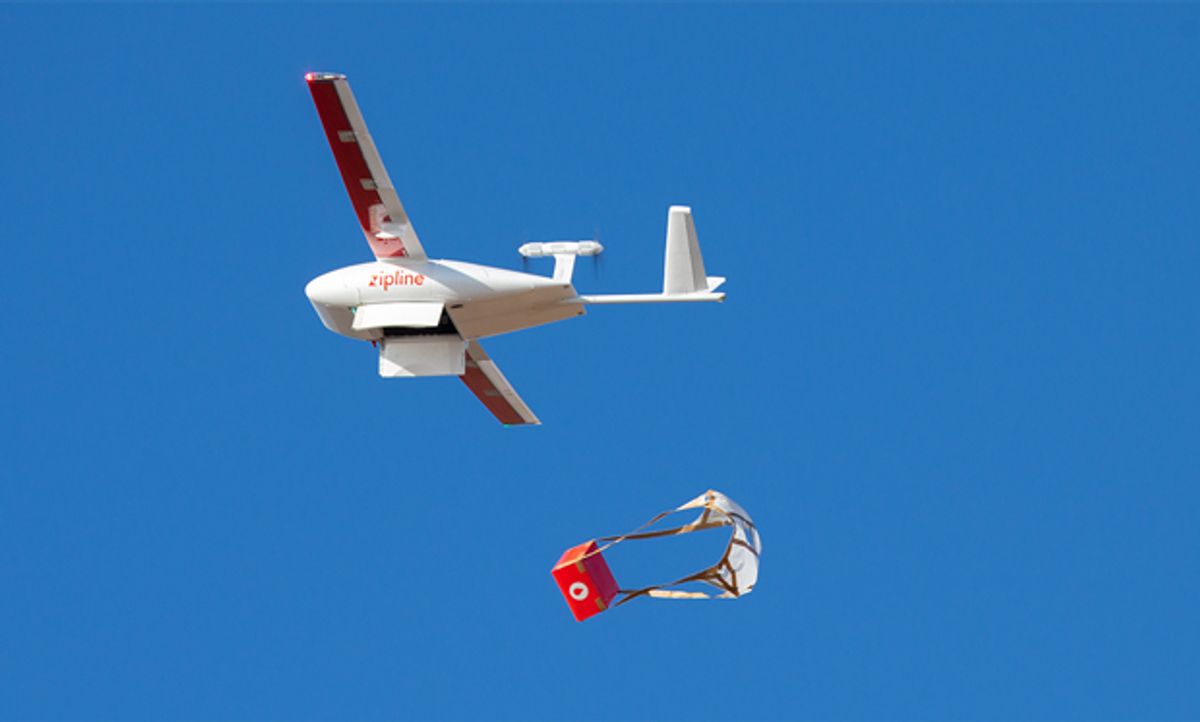We usually don’t toss around the word “disrupting” in a technology context without some serious eye roll. But Zipline really has been disrupting medical supply delivery in Africa by using drones to bypass busy roads and hilly terrain to deliver medical supplies to hospitals and clinics in minutes rather than hours. We visited Zipline in Rwanda last year, and the system it has for delivering blood, blood products, and medication is versatile, reliable, and even (in some cases) more affordable than any other delivery method available.
It’s not at all surprising that the unique capabilities Zipline offers have caught the attention of the U.S. military, which (at least in terms of personnel ratios) is primarily a massive logistics and support organization and secondarily a fighting force. For the past year or so, the Defense Department’s Defense Innovation Unit (DIU) has been working with Zipline to evaluate how their technology could be used to help the U.S. Marines Corps. In July, Zipline deployed to Australia to participate in a joint military exercise to demonstrate “how its instant drone delivery capability could help save lives in austere and tactical emergency environments, which include live-fire artillery.”

Here’s what Zipline managed to pull off while operating from a single fulfillment center it built in just a week as part of the exercise:
- 461 sorties and 381 deliveries, many in zones with active artillery fire
- An increase of max payload to 2.044 kilograms
- Delivered 24 units of mock blood in under 1.5 hours to a notional mass casualty scenario
- Delivered 68 kg (150 lbs.) of product in under 3 hrs; and 50 kg (110 lbs.) of mock blood and water in under 4 hrs
- 57 deliveries to 5 different locations in 6.3 hrs
- Night-time deliveries to units doing night operations
- Endurance flight deliveries with flight times over 80 minutes
All of this grows directly out of Zipline’s existing medical delivery system in Africa. So, delivering at night, covering long distances, reaching multiple locations, and coordinating the movements of multiple drones in the air at once are all familiar challenges. Flying under artillery fire is probably new, I would guess, and we asked Zipline CEO Keller Rinaudo what else was different about working in a military context:
We were operating in complex military airspace—with Ospreys flying overhead and live artillery fire. And it was in Australia, which has one of the most complex and regulated airspaces in the world.
Under normal operating circumstances, we generate flight paths based on recommended keep-out zones from civilian ATC and then provide them with flight visibility and tracking ability. In order to operate during the multinational forces exercise in Australia, Zipline had to share the same space as other military air assets and around ground unit movements. We created flight paths to avoid military aircraft, holding areas, battle positions and helicopter landing zones. We selected [delivery] sites that supported ground units, and we carefully deconflicted with Air and Artillery officers before operations began, which included carefully calculating the exact location under the trace of fire where a Zip could fly.
The DoD wanted to know if we could rapidly forward deploy, integrate with ground forces, deconflict with military aircraft and our own in real time, operate in a range of conditions, and demonstrate the capacity to swarm aid in mass casualty events. We did all those things.
Essentially, Zipline is solving the exact same problem for the military that it’s solving for communities in Africa, says Andrew Musto, a program manager at the military’s DIU. “Right now, [medical] supplies are moved via helicopter or ground convoy. Both of these methods expose their crews and vehicles to risk, can be limited in their availability, and take time to plan and prepare for.” The military doesn’t really have a good solution for the problem of, “I need blood resupply 10 miles from here in a combat zone within the next 20 minutes,” and that’s what Zipline offers.

Rinaudo says that he hopes to increase the work that Zipline does with the military by an order of magnitude next year. He points out that Zipline would be very valuable in many of the humanitarian and disaster relief contexts in which the military deploys, as opposed to just in combat.
While Zipline has been focusing almost exclusively on medical deliveries, we should point out that its system is not fundamentally about delivering medical supplies. Despite the application for which it it’s best known, it’s a logistics company that offers very fast delivery of small items by drone.
Medical supplies are perhaps the most obvious cargo that’s small enough, valuable enough, and urgently needed, but they could be delivering anything that’s small enough to fit in a Zip’s cargo compartment. It’s probably naive to think that the military isn’t interested in Zips as more of a general-purpose logistics system that could also carry other things, which could include batteries, spare parts, or cargoes that are somewhat less benign. I’m not suggesting that there’s necessarily anything wrong with this, and frankly, if Zipline doesn’t end up doing it, someone else (whether it’s another private company or the military itself) almost certainly will.
Evan Ackerman is a senior editor at IEEE Spectrum. Since 2007, he has written over 6,000 articles on robotics and technology. He has a degree in Martian geology and is excellent at playing bagpipes.



